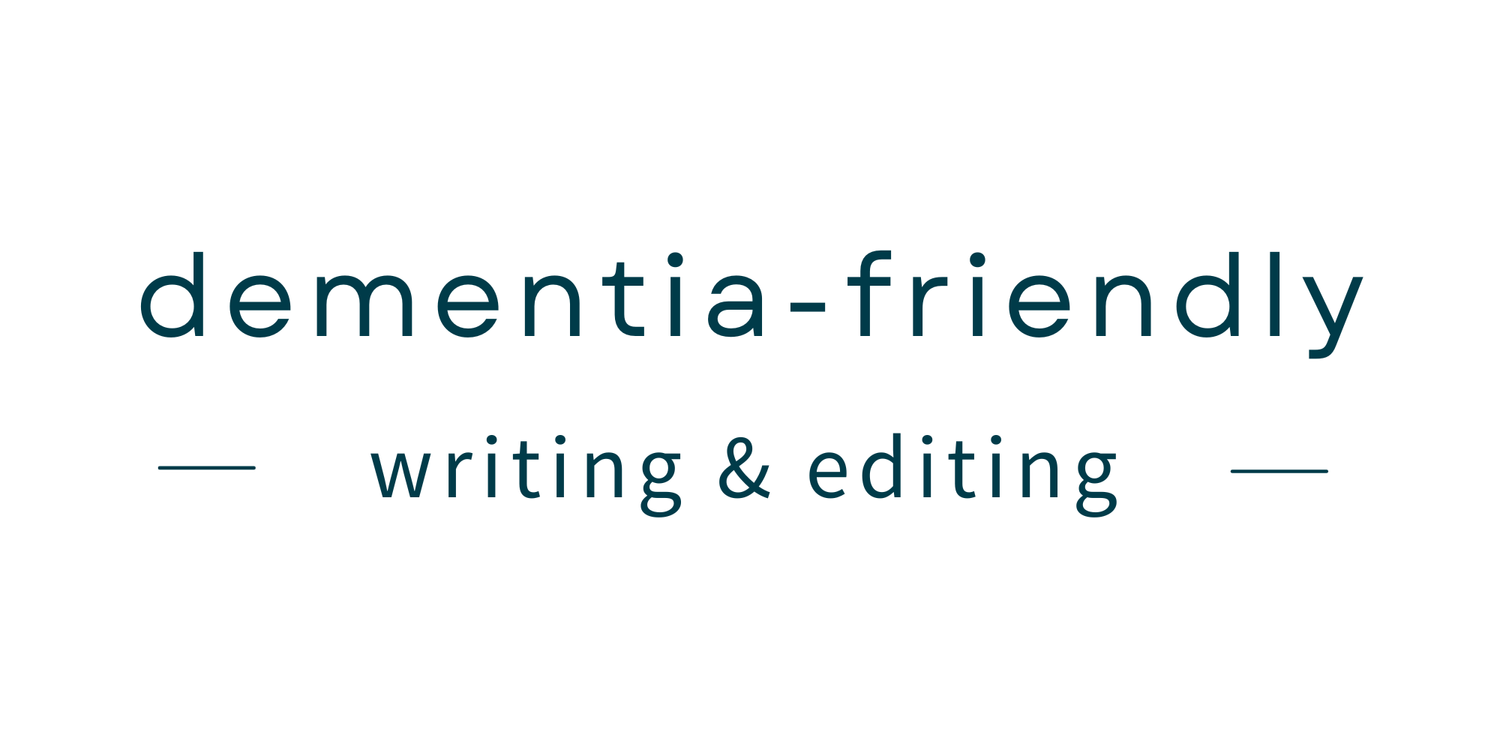10 ways to make your information more dementia-friendly
Decide what format your information should take.
Before you sit down at your computer and launch into writing a long and comprehensive document, stop to think! What format do you really need for your information? What do your readers need to know? What’s the best way of presenting that?
For example, would information about your team work better as short videos? Would a long guide be better split up into separate information sheets? What could you do with your appointment letters to make the information easier to process?
Not everything has to be in long-form written format just because it always has been!
Photo by Harrison Kugler on Unsplash
3. Leave plenty of space everywhere.
Leave wide margins, so that people can write notes if they want to.
Make sure there’s space between paragraphs.
If you’re using headed paper, leave a good gap between the header/footer and the body of the letter so that it’s less confusing.
Use wide enough line spacing for lines to be distinct. Usually 1.5 to 2 is best.
If you’re putting text into boxes or tables, make the margins nice and wide there too.
4. Use descriptive headings in your document.
Write descriptive headings so that people know what they’ll find in that section. It also makes it easier to refer back to.
Suppose you wanted a section with introductory information about your department?
Information - isn’t a great header.
Information about our dementia hub - would be much better.
5. Active voice.
Last week, my husband, who lives with young onset dementia, received a letter. He found one sentence particularly tricky to process, “Further information whatever it may be, will be forwarded to you where achievable within 4 weeks".
“It means they’ll send you some more information within 4 weeks if they can,” I translated.
“Should’ve said that,” he grumbled, and I understood his annoyance. Phrasing sentences in the passive voice, for example, “will be forwarded” creates greater cognitive load for all readers. An easier way of phrasing the sentence would be simply to say, “We will send you some more information soon”.
6. Left-align your text.
If you follow my social media channels, you’ll know that I talk about left-alignment A LOT! That’s because it’s such a simple way of making information easier to read (for all of us). Sometimes, though, we get very bound by styles and conventions that weren’t developed with accessibility in mind. Don’t be afraid to challenge what is making your information harder!
If you have a short one- or two-line heading, sure, go ahead and centre it. Otherwise, align to the left. You can read all about how it helps in this blog post.
7. Set out your text in one single column.
In a single-column layout, the flow of text is easy - you start at the top and move down. In multi-column layouts, the reader has to jump from the end of one column to the start of the next, which can be very confusing. Multi-column layouts mean that we have to use more effort to understand the text. Readers can easily become frustrated.
Use single-column layouts to reduce cognitive load.
8. Avoid using figures of speech in your writing.
Sometimes, people living with dementia start to find it harder to understand metaphors and figures of speech. People may begin to interpret language more literally and when figurative language is used, it can lead to misunderstandings. Avoid figures of speech, cliches and non-literal language where you can. This will help all of your readers to understand your messages clearly.
9. Use a high enough contrast ratio between colours.
Yes, I mention this a lot too!
Web accessibility guidelines recommend using a contrast ratio of at least 7:1 between text and background (see https://www.w3.org/TR/WCAG20-TECHS/G17.html) .
You can check your contrast ratio by using an online checker, such as the one here at WebAIM. And be careful. Not all of our beloved online templates have a high enough contrast ratio in their original form. We may have to tweak them. Not sure how? I have a masterclass coming up soon, so make sure you’re on the email list to get details in due course.
10. Learn more.
We can follow all the tips and read all the blogs (even this one!). But the more we listen to actual lived experience, the more we’ll be able to understand what makes things harder or easier in our writing.
© Heather Eason 2025




